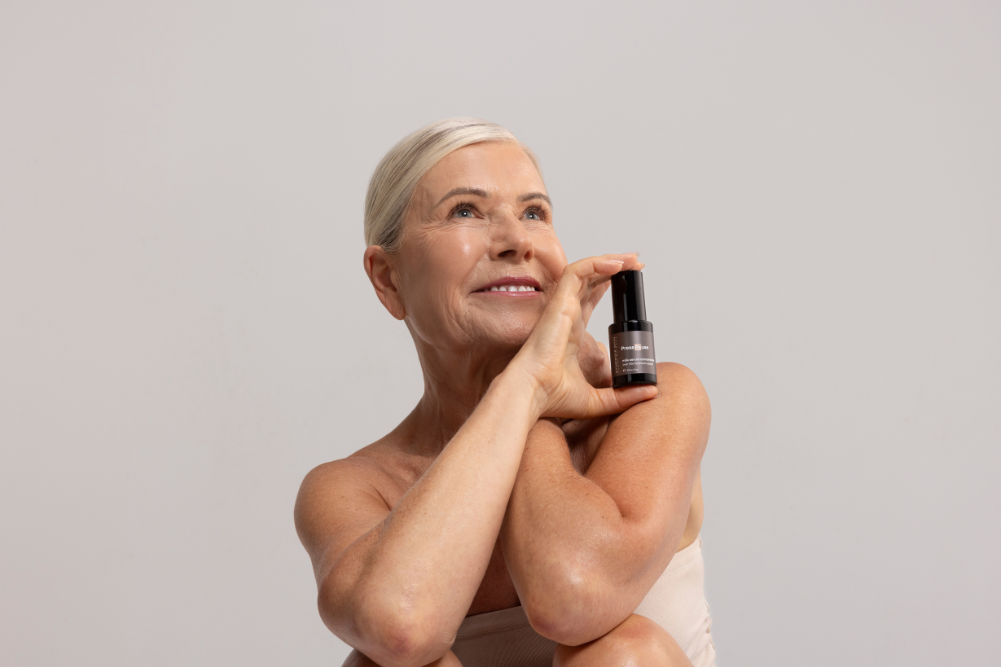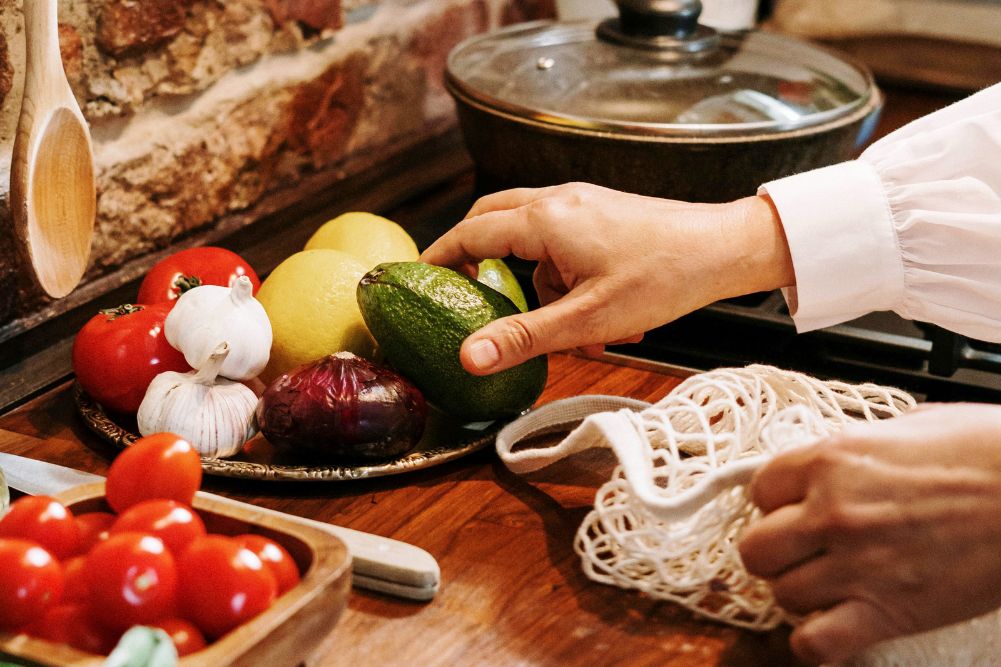How to use different teas for natural beauty and abundant health
While tea has been enjoyed for centuries, of late there’s been a surge in its popularity in its many and varied incarnations. You can grab a cuppa on the go with an iced tea, drink to good health with fermented kombucha, join devout foodies who drink infused gourmet teas or sip an indulgent tea cocktail.
Repeated exposure to damaging UV rays directly impacts on ageing. Green tea polyphenols decrease the damaging effects of ultraviolet A (UVA) and ultraviolet B (UVB) radiation on the skin.
It probably comes as no surprise that tea was first discovered in China. The legend goes that almost 5000 years ago Chinese emperor Shen Nung was relaxing under the leafy branches of a Camellia sinensis tree, heating water in a pot. A few leaves drifted in on the breeze, landing in the pot. He scooped them and some of the water up and let it cool a moment before taking a sip.
Shen Nung is a mythical figure but it is very easy to imagine an unknown ancestor having a similar experience in which leaves, either accidentally or experimentally, were added to heated water. The rest is beverage history.
Tea is one of the most widely consumed beverages in the world. As a drink it’s second only to water. It is grown in many parts of the world including China, India, Sri Lanka, Japan, Taiwan, Korea, Turkey and Vietnam. And, just like a fine wine, each tea from each different area will have unique flavour notes and character.
By definition, traditional teas are derived from Camellia sinensis trees. It is processed into more than 3000 varieties that fall broadly into six categories: oolong, black, green, white, pu’er and yellow tea.
A new incarnation, matcha, is a powdered form of green tea that’s gaining traction with culinary devotees because it’s higher in antioxidants than green tea (the leaves are shaded before harvest so are bright green) and you can add it to milk drinks and baked goods.
In most cases, tea is mass-produced. However, artisan teamakers are springing up all over the place offering tea lovers the chance to partake in delicious bespoke brews.
Teas made from fruits, flowers, bark and leaves of other plants are herbal teas or tisanes. Among the most familiar of these are chamomile, ginger, peppermint, rooibos (or “red bush”), blueberry, rosehip, elderberry, fennel, hibiscus and lavender.
Depending on the plants from which they are made, teas have many therapeutic benefits when consumed. Sipping tea is not only good for your mind, body and spirit — it may also help you live longer. Many of the inhabitants of Okinawa, Japan, live beyond a century. They enjoy a simple, active lifestyle, eat lots of fresh fruits and vegetables and drink plenty of jasmine and black tea.
Buying and storing tea
When purchasing tea, choose organic. You can opt for loose-leaf tea or teabags (square, round or pyramid). While teabags are more convenient, some are bleached to whiten them and contain polypropylene and glues used to seal the bags. Brewing from loose-leaf tea is a bit more cumbersome, and messy, but you are generally using better-quality tea and the result is worth it.
No matter which brew you choose, to preserve the flavours and integrity of the tea, store it in a cool dry place away from herbs and spices in a container that’s not transparent. Light, heat and other aromatic foods will affect the tea’s lifespan and flavour.
How to brew the perfect cuppa
Green tea: 1 tbsp for 175mL water at 75 C. A short steep, increase with each infusion, use for 3–4 infusions.
White tea: 2 tbsp for 175mL water at 85°C. Steep 2 mins, increase steep time 30 seconds for up to 2–3 infusions.
Oolong tea: 2 tbsp for 175mL water at 85 C. Steep 1–2 mins, increase steeping time 1 min for up to 10 infusions.
Black tea: 2 tbsp for 175mL water at 100°C. Steep 2 mins. (Some teas like Chinese black can be infused a second time for 1–2 mins.)
If you don’t have a variable kettle gauge, let the water boil and sit with the lid open for 5 mins for green and white tea, 3 mins for oolong.
- From The Tea Book by Linda Gaylard
Drink to detoxify
Teas contain polyphenols, amino acids, enzymes, pigments, minerals, methylxanthines (including caffeine), volatiles and carbohydrates. Tea (Camellia sinensis) combats oxidative stress, improves fine lines by plumping up the skin, helps with skin conditions like psoriasis and also promotes soft silky hair.
Some research also shows tea polyphenols may reduce sebum secretion and acne, whether the tea is consumed or applied to the problem areas. To protect against premature ageing, go for matcha, green and white tea.
Not only does tea detoxify, it promotes youthful skin. The polyphenols in tea are powerful antioxidants, fighting the free radicals that contribute to cellular damage and ageing.
A simple and easy solution to revitalise dry lips is a natural tea treatment: using a green or white teabag, steep in some water and place between the lips for a few moments.
Green tea infusions have found their way into almost every beauty product imaginable including shampoos, conditioners, moisturisers, lipsticks and balms. Green tea is unoxidised so it’s the closest in form to the fresh leaves of the plant it comes from. Matcha, along with the lesser-known white tea, contains more antioxidants than black and oolong teas and is the holy grail of natural beauty tea products.
Professor Declan Naughton of the UK’s Kingston University has conducted research showing the anti-ageing effects of white tea. He studied plant extracts that protected the structural proteins of the skin: elastin and collagen in particular. Results showed white tea prohibited the actions of enzymes that break down collagen and elastin.
Drinking green tea can help prevent scarring. Dr Stephen Hsu, from the Medical College of the Georgia Department of Oral Biology, studied EGCG, the most prolific green tea polyphenol, and found that it reactivated dying skin cells, causing them to divide and produce energy, accelerating the wound healing process, which helps with scarring.
Green tea also benefits teeth and gums. A Japanese study at Kyushu University showed those who sip green tea on a regular basis had less tooth decay and fewer gum problems.
Anti-stress elixir
After a tough day of child wrangling or negotiating challenges in the workplace, sitting down with a cup of tea is wonderful therapy. Is it the art of making tea that allows you to refocus and reduce stress levels? Or is it the fact that when you sip tea you get a chance to put your feet up? Or perhaps it’s that special something that’s in the tea. Stress wreaks havoc on the skin, triggering acne, dermatitis and psoriasis and contributing to premature ageing.
Rooibos (Aspalathus linearis) is one of the best teas for reducing stress. Scientists at Stellenbosch University in South Africa isolated two rare components in rooibos — the two flavonoids called aspalathin and nothofagin — that contribute to this stress-lowering effect. Sipping lemon balm tea is also a great stress elixir that can also help with headaches.
For lovely locks
This nourishing ginger and mint tea rinse promotes shiny tangle-free hair. You need 4cm root ginger, a small bunch of mint and 100mL spring water. Grate the ginger, add finely chopped mint, boil the spring water and pour over to make tea. Allow to infuse until cool then strain. (From Pretty as a Peach by Janet Hayward and Susie Pritchard-Casey.)
Sleep enhancers
Lack of sleep can lead to not only to brain fogginess and poor concentration but also dark circles under the eyes. A restful night’s slumber puts a spring in your step and rest allows skin cells to repair and rejuvenate. If you struggle to sleep, try sipping chamomile tea. A small Taiwanese study of 40 women showed chamomile helps induce slumber when the tea is sipped regularly before bedtime.
Drinking lavender tea (or popping a sprig of lavender under your pillow slip) also promotes restful sleep.
Sunburn saver
Repeated exposure to damaging UV rays has direct impacts on ageing. Green tea polyphenols decrease the damaging effects of ultraviolet A (UVA) and ultraviolet B (UVB) radiation on the skin. A study in the journal Experimental Dermatology reported application of green tea showed a significant 38.9 per cent decrease in sunburn cells.
Sunburn can be painful, but gentle relief can be only a cup of green tea away. Place a couple of generous teaspoonfuls of green tea (or several organic teabags) in a heatproof cup and add cooled boiled water. Strain and pour into a spritzer bottle, adding a couple of drops of rosehip oil and perhaps a little citrus zest. Cool and spray as needed. It’s also a great pick-me-up.
Peppermint tea too can offer soothing relief from summer dryness. Let your skin drink in the soothing organic antibacterial and anti-inflammatory properties. Chop up a small handful of peppermint leaves and add to boiled and slightly cooled water.
To reduce bloating
Slipping into that little black dress for a night out can quickly turn into a nightmare if you suffer from bloating. Sipping a lemongrass tea can help with bloating due to its diuretic effects; it can also reduce anxiety.
Try this lemongrass brew. Cut a few lemongrass stalks into small pieces (2 tsp worth) and place in a heatproof container. Boil some water and pour over the chopped lemongrass, allowing it to steep for about 10 mins. Gently strain the lemongrass pieces into a cup and sip the liquid. If you’d like to sweeten it, add a little honey.
Lemongrass tea also lifts your mood, aids digestion and is great for detox.
The eyes have it
A tell-tale sign of tiredness is puffy eyes. Sliced, chilled cucumber hydrates and soothes puffy eyes but as an alternative why not try some soothing tea? If you’ve had less shuteye than you’d like and want to look refreshed, simply pop a couple of cool teabags over your eyes, elevate your feet and lie down for a few moments. Teas from the Camellia sinensis plant contain caffeine, which helps with puffy eyes.
Lip service
Plump, hydrated lips provide the perfect pout. Cooler weather strips hydration from lips and can leave them feeling dry, cracked and sore. A simple and easy solution to revitalise dry lips is a natural tea treatment. Steep a green or white teabag in some water and place between the lips for a few moments.
DIY tea facial treatments
These herbal tea-based treatments can nourish dry skin, lock in moisture and help with conditions like pimples or dry skin. Plus, applying a facemask is a wonderful way to nurture yourself as well as nourish your skin — and who doesn’t love a little bit of pampering?
Lavender tea, honey and rolled oats mask
Mix honey, rolled oats and steeped lavender tea together to the consistency of porridge. The anti-inflammatory properties of lavender are good for oily skin and skin prone to breakouts. Leave on for around 15–20 mins and rinse off with warm water.
Hibiscus and coconut oil facial scrub
Mix ½ tsp sea salt with coconut oil and a little steeped hibiscus tea. Apply and leave on for 10 mins then rinse off.
Teas for health
Being healthy is the basis of true beauty. The many body and mind effects of tea are the perfect way to support your health on a daily basis. These tea recipes are drawn from Infuse by Paula Grainger and Karen Sullivan.
Morning Cleanse
To support your body, this tea kickstarts the digestive and lymphatic systems.
1 sprig parsley
½ tsp dried dandelion leaf (or 3–4 fresh)
2 lemon slices
1cm piece of fresh root ginger, peeled and roughly chopped
Lightly tear leaves and add with other ingredients to large mug. Top up with (almost) boiling water.
Meditation Tea
Your health also embraces your mind and soul so before you practise meditation try this inspiring tea to gain clarity, insight and restfulness.
1 tsp dried tulsi (holy basil)
½ tsp chopped fresh rosemary
½ tsp dried mugwort
½ tsp dried vervain leaf
½ tsp dried rose petals
Put herbs and rose petals in tea ball or infuser and place in cup. Pour 200mL of very hot (just off the boil) filtered water to fill cup. Steep for 3–5 mins.








